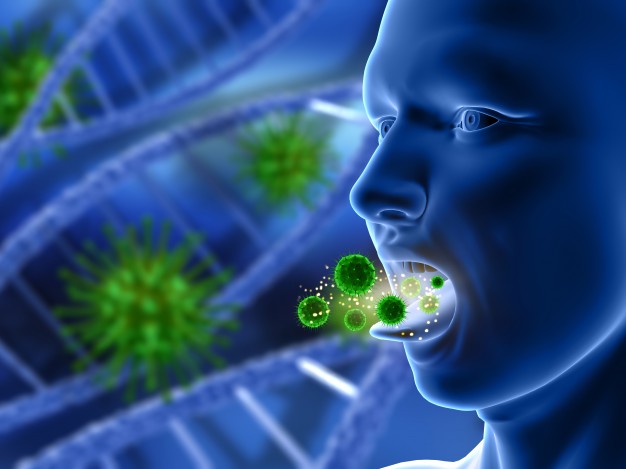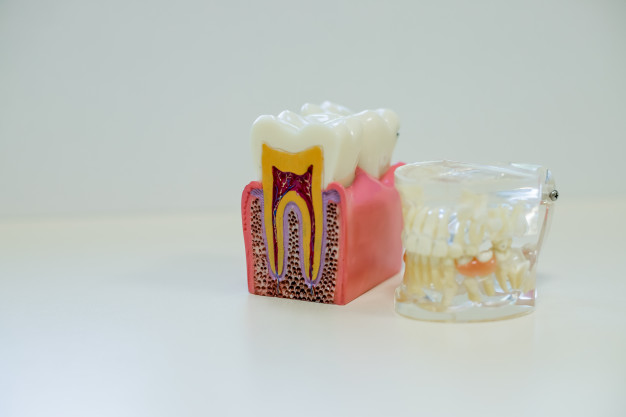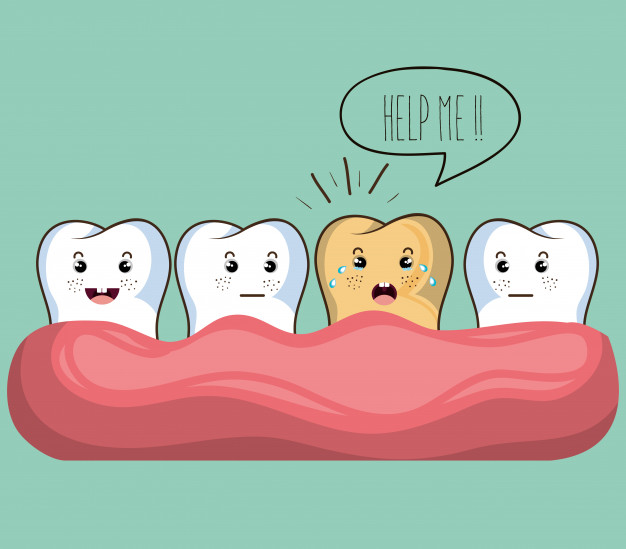
Common Dental Condition Treatments
How much do you know about the most common dental conditions?
There are a large number of minor & serious dental conditions that can affect people of all ages. You can avoid or effectively manage/treat most conditions when you know what symptoms to look out for and how to prevent problems in the first place.
Given the fact that your adult teeth are supposed to last a lifetime, it really pays to understand when something is wrong with your oral health, so you can seek the best treatment as quickly as possible!
Here are six of the most common dental conditions, their symptoms, the treatment options, and how to prevent them:
Condition One: Tooth Decay
Common symptoms: Sensitivity, toothache, bad breath, dark spots on teeth

Tooth decay – also known as cavities or dental caries – refers to a softening of the outer layer of the tooth due to acid attacks. When you consume sugary or starchy foods, the bacteria in plaque will start to break them down, producing acid.
The plaque acids, if allowed to remain in the mouth, will slowly destroy tooth enamel. The condition is very common in both children and adults, and if left untreated, can progress to cause considerable pain and abscesses.
Treatment options:
- Fillings
- Dental Crowns
- Root Canals
- Tooth Extraction
- Plaque Loss Prevention
Prevention: Avoiding sugary drinks and foods, regular brushing & flossing, routine dental checkups
Condition Two: Bad Breath
Common symptoms: Sour taste in the mouth, dry mouth, a white tongue coating, thick saliva

Bad breath – also known as halitosis – is a problem that can affect anyone. The condition is often identified by an unpleasant smell originating from the inside of the mouth.
Bad breath can be a symptom of some dental conditions, such as infections, dry mouth, and gum disease; and other medical conditions and diseases, such as cancer and metabolic disorders. A very common cause of bad breath is poor oral hygiene.
Treatment options:
- Professional Dental Cleaning
- Changing toothpaste
- Advice on good Oral Hygiene
- Treatment for the underlying Dental Condition
Prevention: Regular brushing & flossing, giving up smoking, using a tongue scraper, routine dental exams, mouth rinses
Condition Three: Gum Disease
Common symptoms: Swollen and tender gums, inflammation, bad breath, tooth sensitivity, pain, bleeding gums

Gum disease – also known as periodontal disease – is a bacterial infection that’s caused by high levels of plaque in the mouth. Over time, the bacteria in plaque can destroy the tissue around a tooth, and eventually the ligaments and bone that support the structure of the tooth.
It’s thought that around half the US population has gum disease at varying levels of severity – early stage gum disease is known as gingivitis, while late stage gum disease is called periodontitis. Gum disease can be a very serious condition if it’s not treated quickly and monitored with regular dental checkups.
Treatment options:
- Advice on good oral hygiene practices
- Scaling and polishing
- Root planing
- Antibiotics
- Antiseptic mouthwash
- Restorative dental treatment
Prevention: Regular brushing & flossing, routine dental exams, giving up smoking, eating a healthy diet
Condition Four: Tooth Erosion
Common symptoms: Cracked teeth, chipped teeth, tooth sensitivity, discoloration, tooth indentations

Tooth erosion – also known as acid erosion or enamel erosion – is similar to tooth decay in that it involves acid damage to tooth enamel. Unlike tooth decay, tooth erosion typically occurs when too much acidic food is consumed within a short period of time, leaving the saliva in the mouth incapable of neutralizing the acid fast enough. If too much acid is consumed, it can cause enamel to become thinner and result in an increased sensitivity to temperature.
Dental Treatment options:
Prevention: Avoiding fizzy drinks, avoiding citrus fruits, rinsing your mouth but not brushing your teeth after consuming acid substances
Condition Five: Oral Cancers
Common symptoms: Rough texture in mouth, sores, difficulty eating and swallowing, trouble moving your jaw or tongue, changes to your bite, lumps, bleeding in the mouth, ear pain

Oral cancers include many different types of cancer, such as cancers of the tongue, lip, cheek, and mouth. Any form of oral cancer is incredibly serious.
Commonly, oral cancer is identified by the appearance of a growth/tumor in the mouth that doesn’t go away over time. Regular visits to the dentist are crucial to identify the symptoms of cancer early. If orals cancers are not diagnosed quickly and treated effectively, then they can be life threatening.
Treatment options:
- Oral Surgery
- Radiotherapy
- Photodynamic therapy
- Cetuximab medication
- Chemotherapy
Prevention: Giving up smoking and chewing tobacco, avoiding alcohol, regular dental checkups (to catch the disease early), avoiding prolonged/excessive exposure to the sun
Condition Six: Tooth Sensitivity
Common symptoms: Lingering pain when eating cold or hot foods, pain when biting, swollen gums, toothache and jaw ache

Tooth sensitivity – also known as dentin hypersensitivity – is an easily treatable condition that’s often the result of having thinner than normal enamel. If the enamel on a tooth gets worn down, it can lead to increased sensitivity to hot and cold foods/drinks and cold air. Tooth sensitivity can also cause pain when brushing your teeth or using mouthwash.
An increase in tooth sensitivity can be a symptom of a number of other conditions or problems, such as root damage, tooth decay, and cracked teeth. It’s important to seek treatment if sensitivity increases, as it could prevent small problems developing into serious infections or causing tooth loss.
Treatment options:
- Changing toothbrush and toothpaste
- Applying fluoride gel
- Gum grafts
- Root canals
- Tooth bonding
Prevention: Using a softer toothbrush, not brushing your teeth as hard, avoiding acidic foods and drinks, not grinding your teeth
Seeking Treatment for Dental Conditions
If you think that you have one of the most common dental conditions, or you’re experiencing symptoms but aren’t sure what the condition could be, then the next step is to visit Sheehan Dental in Palos Park, IL.
We’ll help you to get to the bottom of your symptoms and diagnose the true cause of the condition, so you can stop worrying about oral problems and start enjoying great oral health!
